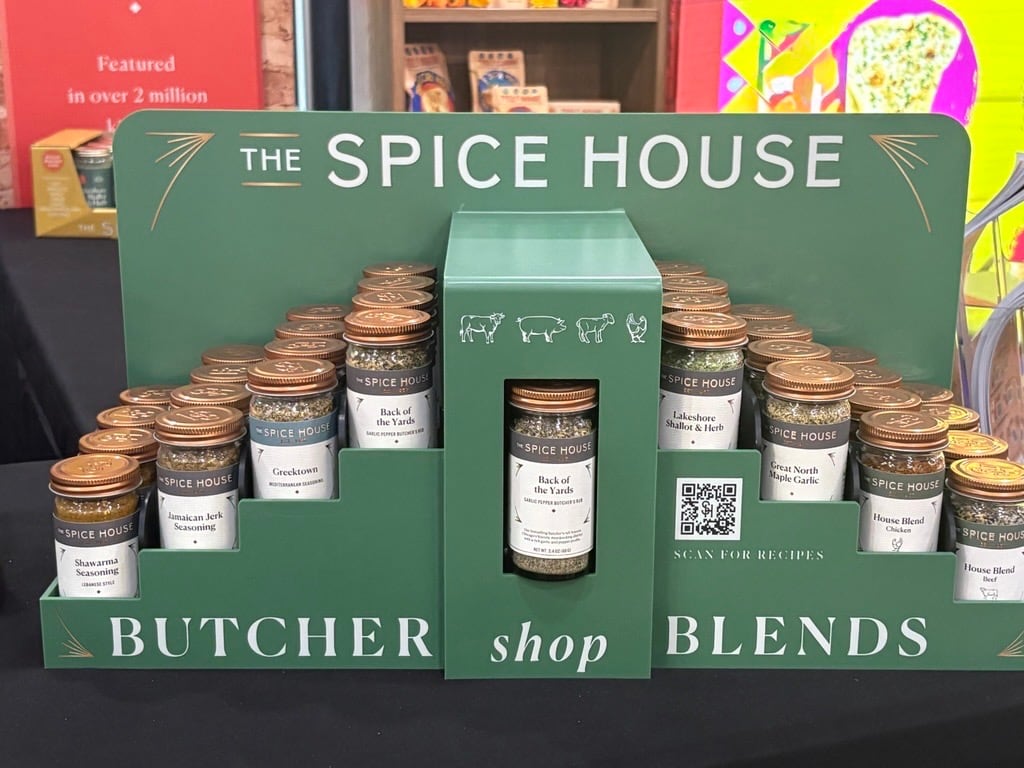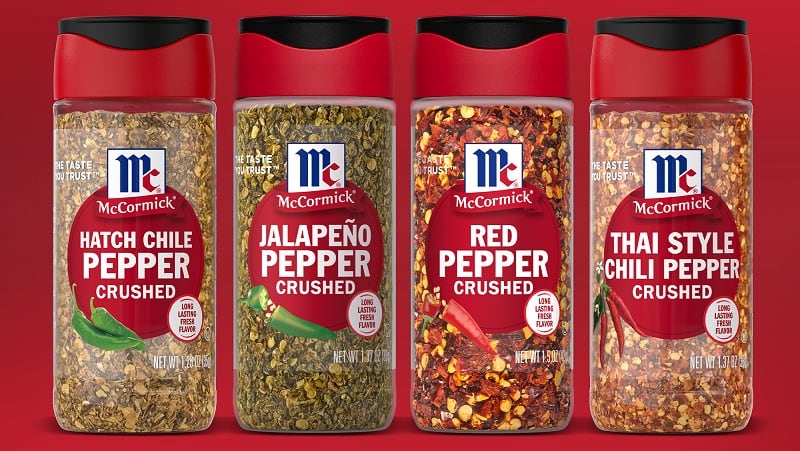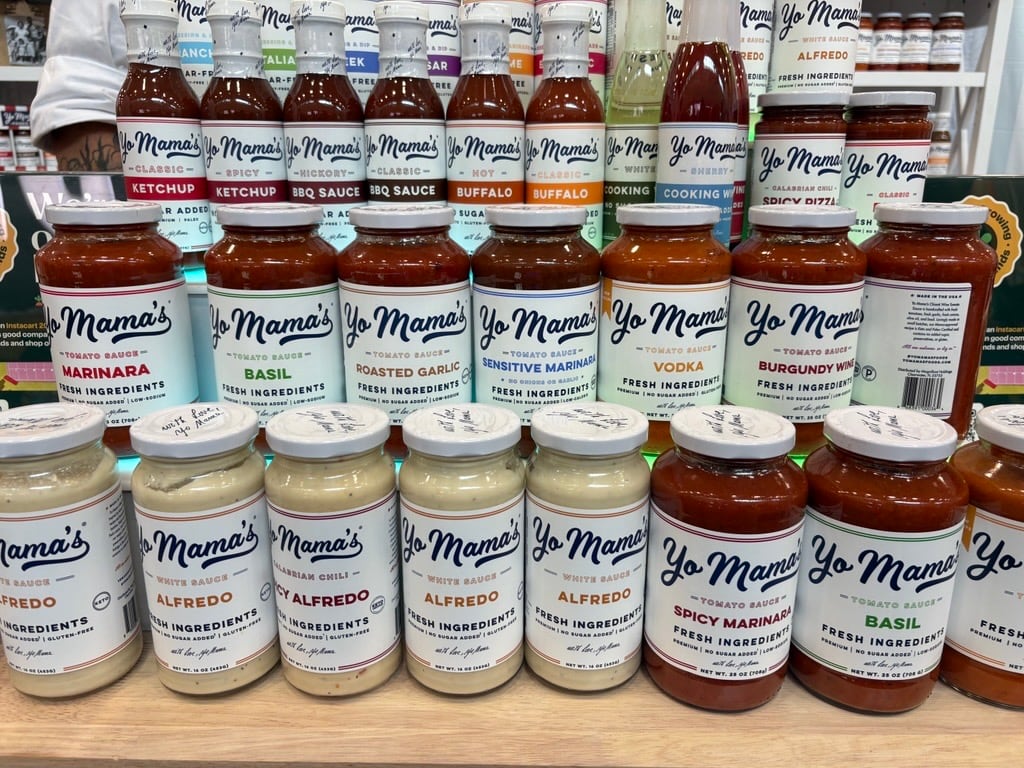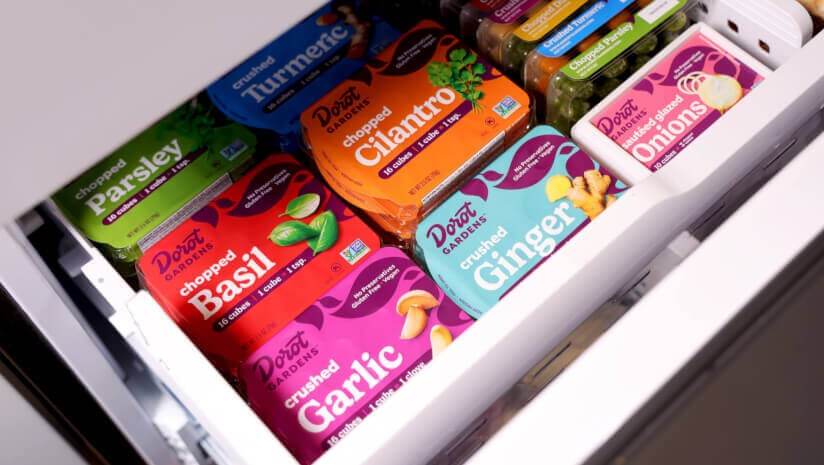Whether born from the test kitchens of a legacy spice company or a family-owned catering business, brands at the recent Summer Fancy Food Show in New York City are reshaping the spice category to meet shifting tastes with creative storytelling, operational flexibility and product launches grounded in personal connection.
The global market for spices and culinary herbs is projected to reach $52 billion in 2025, with a compound annual growth rate of 5.77% through 2030, per Statista data. Category drivers including more consumer cooking with global flavors and interest in health and wellness.
A legacy brand anchored in global curiosity
Chicago-based spice company The Spice House, which has been in business since 1957, spotlighted its portfolio of spice blends, which account for approximately half of its 300 SKUs.
“We are showing some of our bestsellers over the years,” which includes roughly 150 different spice blends and 150 different single spices, explained said Alex Wilkins, VP of product, The Spice House.
Echoing the market data, Wilkins sees global flavors and home cooking as key trends molding the the category.
“Home cooks are getting curious about cooking cuisines from all over the world, so we like to help with that, whether they be curry mixes, South African chicken spices, Middle Eastern blends,” he said. “We have a whole range of Japanese spices and spice blends. So, we try to support that curiosity with flavor.”
A proactive approach to sourcing
Sourcing herbs and spices consistently requires a global supply chain and a proactive management strategy, according to Wilkins. The Spice House has remained largely stable through recent supply disruptions thanks to decades-long relationships with producers and a commitment to transparency, Wilkins noted.
“We have a pretty broad supply chain, hundreds of different ingredients that we work with,” he said. “But our supply chain has been pretty stable throughout the recent challenges, just because we have developed relationships that are decades long. We have backups for things, but we have had pretty good luck continuing our quality.”
That stability comes from cautious forecasting and transparent communication.
“It is all about clear communication, advanced preparation, just delivering as much forecast, even if it is a rough guess,” he added. “Nobody likes to get surprised if we can help it.”
Still, not every ingredient is immune to challenges. Wilkins pointed to base ingredients – like garlic, onion and shallots – as particularly sensitive to demand spikes.
“Those are the foundation of a lot of our flavor profiles,” he said. “When we see spikes in demand, sometimes it can be difficult for our suppliers to react and pivot quickly.”
EVO: Greek roots with a Southern twist
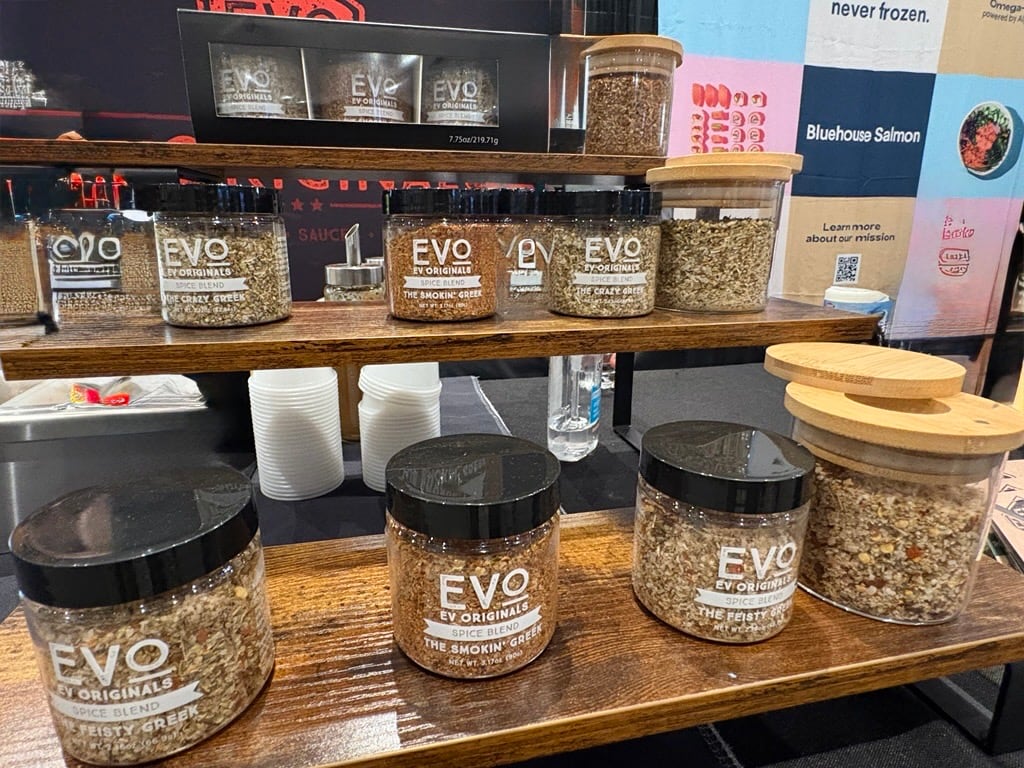
EVO, short for Eleni Vavouris Originals, is a Tennessee-based sauce and spice brand that grew out of a family catering business. Founder Eleni Vavouris develops the recipes, which draw heavily from her Greek-American background.
EVO’s spice line is only a year old, but already gaining attention for its trio of small-batch Greek-inspired blends: Crazy Greek, Feisty Greek and Smoking Greek, according to Vavouris. Each one is anchored in a distinct flavor profile – from citrusy brightness to barbecue smokiness – bridging Mediterranean roots with Southern flair.
Small-batch sourcing and real-time feedback
Unlike many spice companies that rely on international sourcing, EVO’s blends are all produced in the United States. That helps the company avoid major issues tied to tariffs or freight volatility – at least so far.
“Everything on the spice blends, because we are a small batch too, is sourced here in the US,” she said, citing the company has not experienced issues with the spice sourcing, but packaging and condiment ingredients are seeing a slight price hike.
“We are getting a little concerned, like with glass and things on the condiment side, but so far, we have not seen an increase in ingredient cost,” she said.
Because EVO originated from catering, product development often begins with customized menus, tested directly with clients before hitting shelves.
EVO is still growing its retail footprint, with a presence in local specialty shops in the Nashville area, including the city’s airport, along with a direct-to-consumer website. At the Fancy Food Show, Vavouris said feedback was promising.
“A lot of people just walk by and say, ‘Oh, beautiful packaging,’” she said. “And they actually stop, taste it and they love it.”
Flavor first, then heat
Vavouris also pointed to consumer demand for hotter products – a trend she and partner and co-owner Joelle Upton initially resisted but are now embracing through EVO’s rotating Craft Series.
“There’s a lot of people that – mainly male, but a lot of females – want more heat,” she said. “We always said that we are flavor first, flavor forward, and not so much heat. We love heat, but we do not want to burn anyone’s faces off,” adding that often the hot sauce consumer wants “burn-your-face-off heat.”
After recently removing its spiciest product – a Nashville hot sauce – Vavouris hinted a new, even spicier blend is in the works for the brand.

